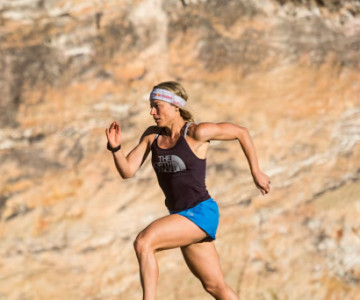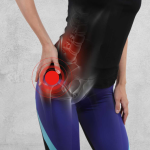So, you’ve decided to give running a try. With a brand-new pair of running shoes, an old T-shirt, and some worn-out socks, you head out the door full of excitement. But after pushing yourself further than expected, you find yourself lost and Ubering back home. The next day, your body feels sore, you’re famished, and you’ve got blisters. It’s tempting to quit, but don’t give up just yet! With a few simple changes, you can start running like a pro. Follow these five essential tips to get you started.
1. Feet
First things first—let’s talk about your feet. Blisters and discomfort are common for new runners, but they don’t have to be part of the deal. Many people make the mistake of choosing running shoes based on color or discounts, but selecting the right pair is crucial for your comfort and injury prevention.
Visit a local running store where experts can help you find the right shoes for your feet. They should let you try on several pairs and even videotape you running to see how the shoes fit your gait. Keep in mind that your running shoes should be about half a size to one full size bigger than your regular shoes to accommodate foot swelling during runs.
Don’t stress if you don’t love the shoes at first. Many stores offer great return policies, so you can exchange them if they’re not working out (as long as they’re not too worn out). A good pair of running shoes might be one of the few investments you make in running, but they can save you from unnecessary aches and pains down the road.
2. Fashion
When it comes to running gear, cotton T-shirts might be fine for lounging but aren’t ideal for exercise. Modern running clothes are designed to wick moisture away and prevent chafing, so it’s worth investing in some proper running attire. You don’t have to splurge on high-end brands either—stores like Marshall’s or TJ Maxx offer affordable options that work just as well.
For your runs, dress as if the weather is 15-20 degrees warmer than it actually is. Your body will heat up as you exercise, and dressing too warmly can cause discomfort. Opt for moisture-wicking socks and clothes, which will keep you dry and comfortable. Women, be sure to invest in a well-fitted sports bra for added support.
If chafing is an issue, consider using a product like Body Glide, which helps reduce skin irritation.
3. Food
Running doesn’t automatically mean you’ve earned a sweet treat. While indulging in a chocolate chip cookie after your run might sound tempting, proper fueling will benefit you far more. To optimize recovery and keep your energy levels up, aim to consume a balanced mix of protein, carbs, and fat within 20-30 minutes of finishing your run.
Here are some great post-run snack ideas:
- A handful of nuts
- A glass of chocolate milk
- Peanut butter on whole-grain toast
- A Kind bar
- A well-balanced meal with meat, carbs, and vegetables
Eating the right foods will help your body recover and keep you feeling strong for your next run.
4. Friends
Running can be a solitary sport, but it doesn’t have to be. Having a friend to hold you accountable or joining a running group can make a big difference. If no one in your circle is up for running, search online for local groups. Many running stores host weekly group runs, and social media platforms like Facebook and Meetup are great resources for finding running communities.
A good training plan is also essential. A major cause of running injuries is doing too much too soon, so it’s crucial to gradually increase your mileage. Programs like Couch to 5K are designed to help new runners safely progress. A good rule of thumb is to increase your weekly mileage by no more than 10-15%. Starting with a walk-run approach and progressing slowly is a smart strategy.
And if you’re looking for extra guidance, hiring a running coach to create a personalized training plan can help you stay on track and reach your goals.
5. Fundamentals
Before you hit the pavement, make sure you incorporate some healthy habits into your running routine. These simple actions will help you become more resilient, recover faster, and avoid injuries.
- Dynamic Stretching: Warming up with dynamic stretches before your run helps increase blood flow and prepares your muscles for activity.
- Foam Rolling: After your run, use a foam roller to ease muscle tightness and improve recovery.
- Cross-Training: Running is hard on your body, so make sure to mix it up with activities like swimming, biking, yoga, or Pilates to improve your overall strength and flexibility. Aim for cross-training 1-2 times a week.
- Strength Training: Focusing on hip, core, and leg strength will make you a faster, stronger runner and reduce your risk of injury.
- Running Form: Consider having your form assessed to ensure you’re using proper technique. This will reduce unnecessary stress on your joints and muscles.
By focusing on these five areas—Feet, Fashion, Food, Friends, and Fundamentals—you’ll be well on your way to running like a pro in no time. Now, lace up those shoes, head out the door, and start your journey!




